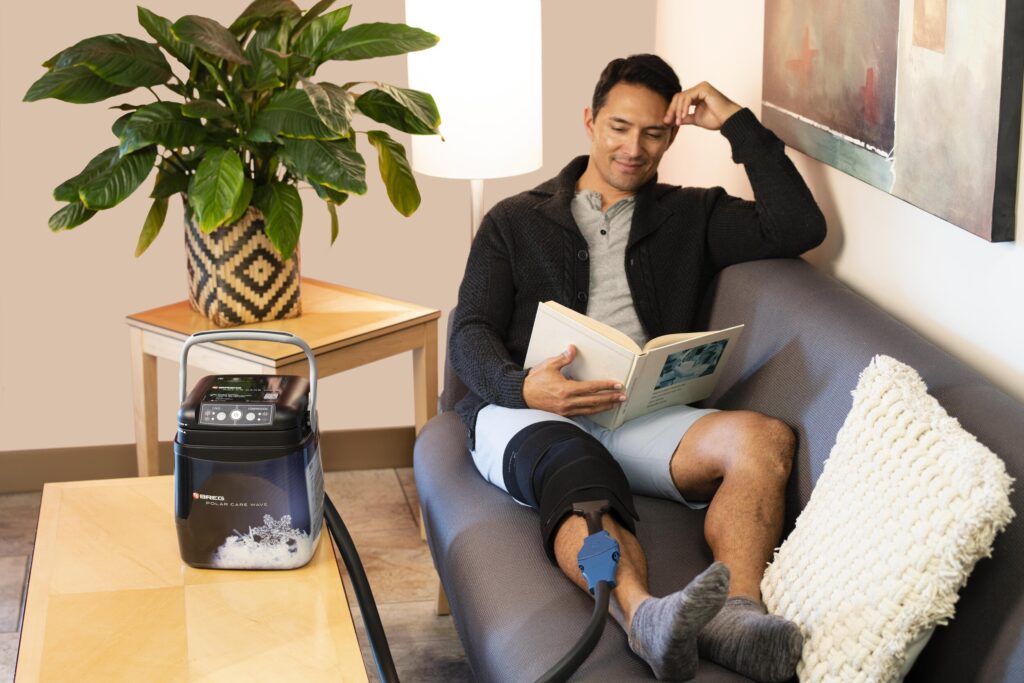
Postoperative care is crucial for a successful recovery after any surgical procedure. Among the most effective methods to enhance this recovery process is cold and compression therapy, a combination that has been shown to significantly reduce swelling, manage pain, and speed up the healing process. One standout system that delivers both these therapies effectively is the Polar Care Wave. This blog post explores the importance of cold and compression therapy in postoperative recovery and why the Polar Care Wave system is an indispensable tool for patients and healthcare providers.
Understanding Cold and Compression Therapy
Cold Therapy: Cold therapy, or cryotherapy, involves the application of cold to an injured area to reduce blood flow, which can significantly decrease inflammation and swelling that causes pain, especially after surgery. By slowing down cellular metabolism, cold therapy helps reduce the risk of tissue damage.
Compression Therapy: Compression therapy involves wrapping the affected area to increase blood flow, which promotes faster removal of the waste products that can accumulate after surgery. When combined with cold therapy, compression helps ensure that the cold penetrates deeper into the tissues, making the therapy even more effective.
The Polar Care Wave System: Enhancing Postoperative Recovery
The Polar Care Wave system ingeniously combines both cold and compression therapy in one easy-to-use unit. Here’s why it stands out as a postoperative recovery aid:
1. Advanced Technology: The Polar Care Wave utilizes a motorized system that circulates cold water and air through a wrap that conforms to the body. This system not only ensures consistent delivery of therapeutic cold but also applies dynamic compression, optimizing the therapeutic benefits.
2. Enhanced Patient Comfort and Safety: With features designed to control temperature and compression levels, the Polar Care Wave ensures that treatments are not only effective but also extremely safe. The system minimizes the risk of tissue damage from excessive cold while ensuring that the compression is not too tight, which could hinder circulation.
3. Ease of Use: Recovery can be physically challenging, making simplicity and ease of use crucial. The Polar Enter Wave is designed to be user-friendly, with simple controls and an intuitive setup that patients can manage at home without professional help. This ease of use encourages consistent application of the therapy, leading to better outcomes.
4. Reduces Dependency on Medications: One of the significant advantages of using the Polar Care Wave is its potential to reduce the need for pain medications, including opioids, which are often prescribed post-surgery. By effectively managing pain through natural means, patients can avoid some of the side effects associated with pharmaceutical treatments.
Clinical Evidence Supports Effectiveness
Numerous studies have validated the effectiveness of combining cold and compression therapy in reducing postoperative pain and swelling. Patients who use systems like the Polar Care Wave often report not only reduced pain levels but also enhanced mobility and a quicker return to daily activities.
Conclusion
The recovery phase following surgery is as crucial as the procedure itself. Incorporating cold and compression therapy through systems like the Polar Care Wave can significantly impact the healing process, enhancing patient outcomes and satisfaction. This method of therapy is a testament to how modern technology can be harnessed to improve health outcomes, emphasizing the Polar Care Wave’s role as a vital component of postoperative care. For patients and healthcare providers alike, understanding and utilizing the benefits of such innovative therapies can make a substantial difference in recovery and overall well-being.